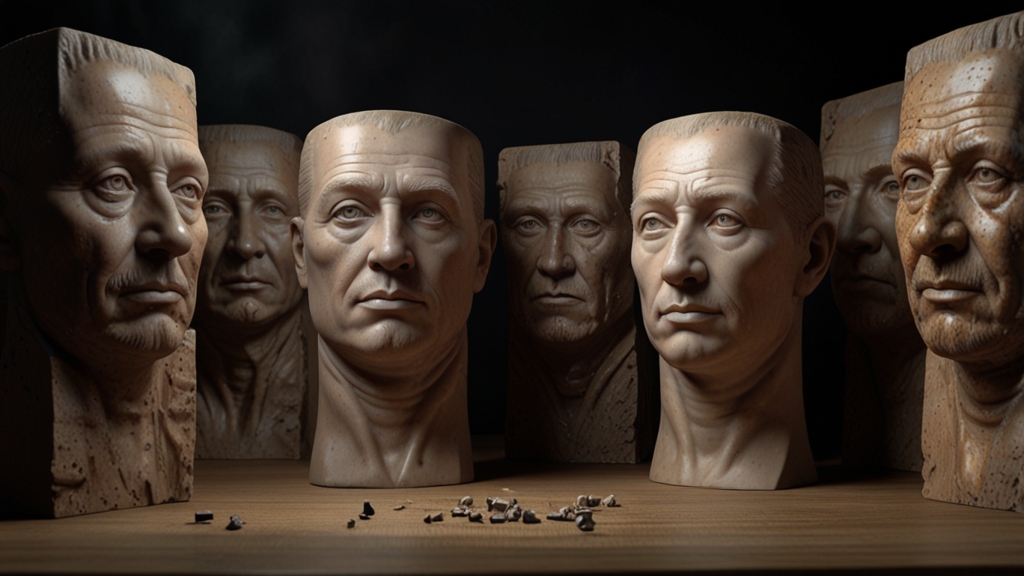The Shocking Reality Behind the Lives of Medieval Queens
Medieval queens are often depicted as grand figures enrobed in luxury, presiding over their courts with grace and authority. While there's a degree of truth to these images, the reality of their existence was much more complex and fraught with peril. Behind the veneer of wealth and power, many medieval queens navigated a landscape filled with political intrigue, social expectations, and personal sacrifices. Let's delve into the multifaceted lives of these remarkable women.
Political Pawns
One of the most shocking truths about medieval queens is that many were primarily used as political pawns. Marriages among royalty were not merely romantic unions but carefully calculated political alliances. These unions were designed to solidify power, form alliances, and secure territorial gains. Queens were often married off at a young age to foreign princes, severing them from their familial support and plunging them into unfamiliar cultures and court politics.
“The marriage was arranged for the peace and tranquility of our realm, without consulting her personal feelings," wrote a medieval chronicler about the union of a young noblewoman and a foreign king.
A Life Under Scrutiny
Once crowned, a queen's every move was subject to scrutiny. Medieval queens were expected to embody the virtues of chastity, piety, and fertility. Their primary duty was to produce a male heir to secure the royal lineage. Failure to do so could result in severe consequences, ranging from social ostracism to annulment of the marriage. In some extreme cases, queens faced accusations of witchcraft or treason, often as a means to remove them from power.
Consider the tragic case of Anne Boleyn, the second wife of Henry VIII of England. Despite her initial favor and influence, she failed to produce a male heir, leading to her eventual execution under dubious charges of adultery, incest, and treason.
The Burden of Power
While queens had limited power compared to their male counterparts, they still held significant influence, particularly in their roles as regents for underage kings or as advisors to their husbands. However, wielding this power came with extraordinary challenges. Queens had to carefully navigate the often-dangerous waters of court politics, rife with betrayal and ambition. They needed to maintain favor with both the king and influential courtiers while advocating for their own interests and those of their children.
Public Perception and Personal Sacrifice
The public perception of queens often oscillated between reverence and vilification. Queens who were perceived as overstepping their traditional roles or wielding too much influence could quickly fall out of favor. Propaganda, rumors, and political machinations could easily turn a beloved queen into a despised figure. The personal sacrifices made by these women were immense, often giving up any semblance of a normal family life or personal freedom for the sake of their role.
“She was both honored and reviled, a symbol of the kingdom but also a lightning rod for its discontent,” observed a historian about a prominent medieval queen.
Legacy and Influence
Despite the many trials they faced, many medieval queens left lasting legacies. They acted as patrons of the arts, established charitable foundations, and sometimes even influenced legislation and diplomatic policies. Their stories, though often overshadowed by those of kings and male leaders, are crucial to understanding the full tapestry of medieval history.
Queens like Eleanor of Aquitaine, who crusaded and governed vast territories, and Isabella of Castile, who funded Christopher Columbus's voyages, stand as testaments to the indomitable spirit and significant impact of medieval queens.
Conclusion
The lives of medieval queens were far more than the sum of their grand titles and resplendent garments. They were fraught with political manipulation, constant scrutiny, and profound sacrifice. While they enjoyed unprecedented power and influence, this came at a great personal cost. Understanding the complex realities behind their lives offers a more nuanced appreciation of their roles in medieval society and their enduring legacies.




